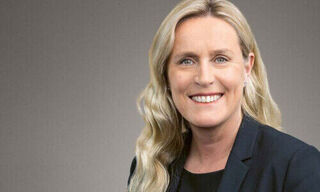UBS: Headcount Declines
As Credit Suisse integration progresses, UBS sees cost savings materialize and is ahead of schedule in winding down non-core assets. The bank remains financially flexible, increasing dividends and planning a new $3 billion share buyback program for 2025.
Further client data migrations, cost reductions, and workforce adjustments are the key milestones for the ongoing integration in the current year. At the same time, UBS maintains financial flexibility to reward shareholders.
The dividend will be raised by 29 percent to $0.90 per share, with a further 10 percent increase projected for 2025, according to the figures released by the bank on Tuesday.
New Share Buyback Program
UBS also plans additional share repurchases, targeting up to $1 billion in buybacks in the first half of the year and up to $2 billion in the second half.«We have achieved all key milestones for 2024 and significantly reduced integration risks while maintaining a solid capital position,» said CEO Sergio Ermotti, reflecting on the past year.
In 2025, UBS will execute the next phase of integration with discipline. «We are confident that we will substantially complete the integration by the end of 2026, achieve our financial targets, and implement our growth initiatives,» he added.
The bank reported $3.4 billion in cost savings for 2024, bringing total savings to $7.5 billion compared to the combined UBS and Credit Suisse cost base in 2022. This marks the achievement of nearly 60 percent of the targeted cost reductions.
Headcount Declines to 109,000
The workforce has also been affected by the integration. The number of full-time employees fell by 4,194 to 108,648 by year-end. Following the acquisition of Credit Suisse, the combined bank had around 120,000 employees.
The client migration in Switzerland is expected to be completed by the end of 2025, covering most client accounts and all asset management portfolios. Once finalized, UBS anticipates «substantial cost savings.»
Outside Switzerland, about 90% of client accounts have already been migrated to UBS platforms. The migration of Credit Suisse wealth management clients’ accounts has been completed in key booking centers, including Hong Kong, Singapore, Japan, and Luxembourg.
Cost Targets on Track
UBS reaffirmed its cost-saving targets through 2026. For 2025, the bank aims to cut costs by approximately $2.5 billion, bringing the total reduction to around $13 billion by the end of 2026. These savings will offset expected integration-related expenses of roughly $14 billion.
The bank also noted that the wind-down of its Non-Core and Legacy (NCL) business is progressing ahead of schedule. Risk-weighted assets (RWA) in this division declined by $3 billion in Q4, ending the year at $41 billion. The full-year reduction amounted to $33 billion.
Cautious Outlook
UBS remains cautious in its business outlook, citing growing uncertainties and market volatility. While investor sentiment remained positive in Q4 2024, institutional and private clients were highly active in an environment shaped by increased risk appetite following the U.S. presidential elections. This optimism has extended into early 2025, fueled by stronger growth expectations in the U.S.
However, weaker economic prospects outside the U.S., uncertainties around global trade, inflation, central bank policies, and geopolitical risks – including Germany’s upcoming elections –could weigh on investor behavior.
UBS expects markets to remain highly sensitive to new developments—both positive and negative. «Periods of heightened volatility across all asset classes should be expected,» the bank stated. For Q1 2025, UBS anticipates a decline in net interest income, while higher assets under management should support recurring fee income.



























